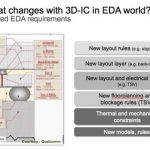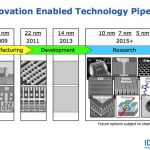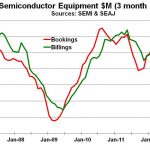It was an amazing year for SemiWiki and I would like to sincerely thank all who participated. SemiWiki traffic doubled again which is amazing in itself. SemiWiki membership more than tripled as we continue to add vertical markets (EDA, IP, Services, Foundry). More people are blogging on SemiWiki and the Forums and Wikis are coming to life. With millions of page views I can comfortably say that social media is now an integral part of the fabless semiconductor ecosystem.
What’s in store for SemiWiki in the new year? We will continue to grow with more original content, another vertical market (FPGA), and increased exposure through new partnerships with mainstream news carriers. Today more than 450,000 people read SemiWiki, in 2013 that number will exceed 1,000,000 people, believe it.
A significant challenge we continue to face as an industry, and I do not see this changing anytime soon, is the lack of understanding of what social media is really capable of. Seriously, most of the people in our industry simply do not get it. Admittedly, I probably would not get social media either if not for my four children as they have pushed me along. As a result I have spent a considerable amount of time on SemiWiki, LinkedIn, Twitter, FaceBook, and Google+ looking at the analytics and calculating the return on investment (ROI) for different activities.
As a career salesperson I can tell you social media is all about ROI. The most limiting factor of the sales equation is time spent educating customers on your technology and the resulting value proposition. If you call on an account that has never heard of your product or company the sales cycle can be very expensive. Back in the day we made cold calls and calculated the ROI. For example, you would have to call on 100 people to get 5 qualified meetings which today is an added expense that we as an industry cannot afford.
On the other hand, when a potential customer initiates contact (out of the blue) we call that a Bluebird, as in a sale just flew in the window which is a rare occurrence. Bottom line, social media is all about creating Bluebirds and compacting the sales cycle as much as possible.
White papers are a staple in our industry with webinars and live seminars being a close second and third. They are cost effective customer communication channels, invitations to collaborate, but also very important sales tools.
SemiWiki bloggers are industry professionals with 25+ years of experience. By day we work inside the fabless semiconductor ecosystem, by night we blog our opinions, observations, and experiences. In doing so, we drive qualified traffic to your whitepapers, webinars and seminars. This is a collaborative real time feedback loop and the ROI is easily documented. Work with us and Bluebirds will fly through your windows, absolutely.
Happy New Year and best of luck to you in 2013! It would be a pleasure to work with you, just fly through our window and we will take care of the rest.











